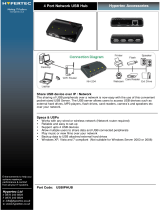
Roaming Profiles ...................................................................................... 12
User Accounts ........................................................................................................................ 12
Creating a New User Account .................................................................................. 12
User Manager ........................................................................................................ 13
User Profiles ........................................................................................................... 13
Regional and Language Options .............................................................................................. 15
Administrative Tools ............................................................................................................... 16
4 Applications ................................................................................................................... 17
Symantec Endpoint Protection Firewall (select models only) ......................................................... 18
About the Agent ...................................................................................................... 18
New Features and Functionality ................................................................................ 19
Citrix Program Neighborhood (PN) Agent ................................................................................. 19
Remote Desktop Connection .................................................................................................... 20
HP Remote Desktop Protocol (RDP) Multimedia and USB Enhancements ........................................ 20
Configuring USB Drives for Redirection ...................................................................... 20
HP Remote Graphics Software (RGS) Receiver ........................................................................... 22
TeemTalk Terminal Emulation ................................................................................................... 22
VMware View Manager ......................................................................................................... 23
Altiris Client Agent ................................................................................................................. 24
HP Management Agent ........................................................................................................... 25
HP Client Automation Registration and Agent Loading Facility (RALF) ........................................... 25
HP ThinState .......................................................................................................................... 26
HP ThinState Capture ............................................................................................... 26
HP ThinState Deploy ................................................................................................ 30
Microsoft Internet Explorer ....................................................................................................... 30
Windows Media Player 11 ..................................................................................................... 31
5 Control Panel Extended Selections .................................................................................. 32
Write Filters ........................................................................................................................... 33
Choosing the Write Filter ......................................................................................... 33
Enhanced Write Filter Manager ................................................................................ 33
Benefits of the Enhanced Write Filter .......................................................... 33
Enhanced Write Filter Status Service ........................................................... 34
Enhanced Write Filter GUI ........................................................................ 35
EWF GUI Buttons ...................................................................... 35
DOS Command-line Tool Boot Commands .................................................. 36
Using Boot Commands ............................................................... 36
File-Based Write Filter Manager ................................................................................ 37
Benefits of the File-Based Write Filter .......................................................... 37
File-Based Write Filter Status Service ........................................................... 37
vi






















